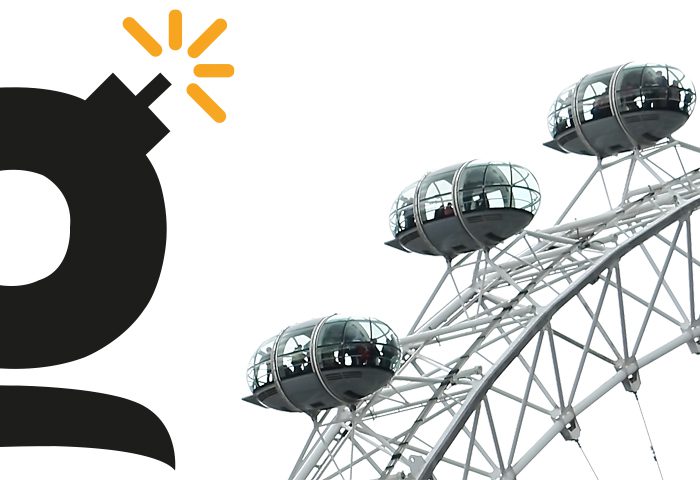
2020 saw the culling of high street businesses that had not diversified and moved to a digital offering. In the US, government figures show e-commerce jumped 44% in the second quarter of 2020, compared to the previous year. In the UK, research company GlobalData puts the increase at 50%.
According to the centre for retail research, 52 retail companies went under in 2020 (up to November 2020) closing 4726 stores. Many other businesses (such as Lush soaps), saw that they can turn their high street or retail centre outlets into distribution stores to local customers buying online.
We did a project for a car parking company in 2020 and saw the impact in the drop off in parking and the opportunities that this can present post covid. Logistically, the high street remains a centre for most urban communities and therefore a great place for local distribution.
The way we buy our product was always going to go this way, but 2020 was the catalyst that enabled rapid adoption.
The high street will become a place we go for entertainment. The cinema was doing very well pre-covid despite record levels of streaming, people like to congregate and experience things together. Brands will play on our senses in these environments now. We will go to the high street to experience smells, sounds and sights that will entice us to touch and familiarize ourselves with their product to buy later from the comfort of our own home. Pre covid our clients advised us that anything over 9.99 (£,$,€) got researched anyway.
You cannot compete just on price. You must deliver the experience and make it memorable. Where would be better to do that than where people go to seek a good time? The high street.
We think there will be lots more amazing brand pop up experiences, and this levels the playing field locally for start-up brands, who can beta test new products and services in different markets.

2020 saw the culling of high street businesses that had not diversified and moved to a digital offering. In the US, government figures show e-commerce jumped 44% in the second quarter of 2020, compared to the previous year. In the UK, research company GlobalData puts the increase at 50%.
According to the centre for retail research, 52 retail companies went under in 2020 (up to November 2020) closing 4726 stores. Many other businesses (such as Lush soaps), saw that they can turn their high street or retail centre outlets into distribution stores to local customers buying online.
We did a project for a car parking company in 2020 and saw the impact in the drop off in parking and the opportunities that this can present post covid. Logistically, the high street remains a centre for most urban communities and therefore a great place for local distribution.
The way we buy our product was always going to go this way, but 2020 was the catalyst that enabled rapid adoption.
The high street will become a place we go for entertainment. The cinema was doing very well pre-covid despite record levels of streaming, people like to congregate and experience things together. Brands will play on our senses in these environments now. We will go to the high street to experience smells, sounds and sights that will entice us to touch and familiarize ourselves with their product to buy later from the comfort of our own home. Pre covid our clients advised us that anything over 9.99 (£,$,€) got researched anyway.
You cannot compete just on price. You must deliver the experience and make it memorable. Where would be better to do that than where people go to seek a good time? The high street.
We think there will be lots more amazing brand pop up experiences, and this levels the playing field locally for start-up brands, who can beta test new products and services in different markets.

2020 saw the culling of high street businesses that had not diversified and moved to a digital offering. In the US, government figures show e-commerce jumped 44% in the second quarter of 2020, compared to the previous year. In the UK, research company GlobalData puts the increase at 50%.
According to the centre for retail research, 52 retail companies went under in 2020 (up to November 2020) closing 4726 stores. Many other businesses (such as Lush soaps), saw that they can turn their high street or retail centre outlets into distribution stores to local customers buying online.
We did a project for a car parking company in 2020 and saw the impact in the drop off in parking and the opportunities that this can present post covid. Logistically, the high street remains a centre for most urban communities and therefore a great place for local distribution.
The way we buy our product was always going to go this way, but 2020 was the catalyst that enabled rapid adoption.
The high street will become a place we go for entertainment. The cinema was doing very well pre-covid despite record levels of streaming, people like to congregate and experience things together. Brands will play on our senses in these environments now. We will go to the high street to experience smells, sounds and sights that will entice us to touch and familiarize ourselves with their product to buy later from the comfort of our own home. Pre covid our clients advised us that anything over 9.99 (£,$,€) got researched anyway.
You cannot compete just on price. You must deliver the experience and make it memorable. Where would be better to do that than where people go to seek a good time? The high street.
We think there will be lots more amazing brand pop up experiences, and this levels the playing field locally for start-up brands, who can beta test new products and services in different markets.

